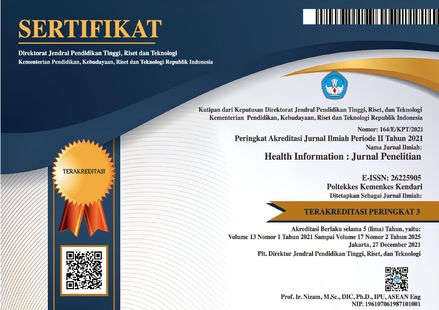Efek Dari Seramid Terhadap Pengobatan Dermatitis Atopik : Literatur Review
Keywords:
Seramid, Dermatitis Atopik, Pelembab SeramidAbstract
Ceramides are important sphingolipids in forming the skin's permeability barrier and preventing the invasion of foreign substances. Insufficient ceramide levels can disrupt the function of the skin barrier. Atopic Dermatitis (AD) is one type of skin disease that occurs due to skin barrier dysfunction, and ceramides can be used as an alternative therapy. This study aims to review the literature on the use of ceramides in the treatment of AD. The research was conducted by searching and selecting relevant literature. The selected keywords were "Ceramide" AND "Atopic Dermatitis" OR "Atopic Eczema" AND "Treatment." The author searched for a collection of literature from reliable sources such as Pubmed, Google Scholar, Ebsco, Medline, Science Direct, Cochrane, and Hindawi, published in the last 10 years. From the search results, the author performed further selection and obtained relevant 33 journals. The discussion was organized in a structured format, consisting of definition, epidemiology, pathophysiology, and how ceramides provide an alternative therapy for atopic dermatitis. Ceramides act as water modulators and form a multi-layered lamellar structure with other lipids in the stratum corneum (SC), contributing to the barrier permeability. Ceramide disturbances can disrupt the function of the intracellular skin barrier and increase transepidermal water loss (TEWL), leading to various skin diseases, including atopic dermatitis. There is a significant correlation between reduced ceramide levels and the occurrence of atopic dermatitis. The management of atopic dermatitis is primarily aimed at reducing signs and symptoms of the disease and preventing or minimizing relapses. The best therapeutic approach is to enhance the function of the skin barrier through regular moisturization and avoiding irritants. The research findings indicate that ceramides play a role in maintaining skin moisture and repairing skin barrier damage. The use of topical products containing ceramides and other lipids can help improve the skin barrier and reduce AD symptoms. Studies also show that adding ceramides to skin moisturizers can enhance the function of the skin barrier. This research provides further understanding of the role of ceramides in the treatment of atopic dermatitis and the development of products that can enhance skin health.
Downloads
Published
How to Cite
Issue
Section
Citation Check
License
Copyright (c) 2023 Meilissa Christine, Laurencia Sylvano, Tinezia Allia Riantyarn, Mutiara Mutiara, Michelle Ernestine Kolondang (Author)

This work is licensed under a Creative Commons Attribution-ShareAlike 4.0 International License.
Authors retain copyright and grant the journal right of first publication with the work simultaneously licensed under a Creative Commons Attribution-ShareAlike 4.0 International License that allows others to share the work with an acknowledgment of the works authorship and initial publication in this journal and able to enter into separate, additional contractual arrangements for the non-exclusive distribution of the journals published version of the work (e.g., post it to an institutional repository or publish it in a book).











